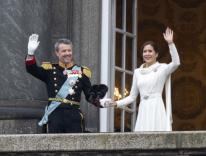After entertaining chapters on the on-the-job education in the faith that he got while presenting and defending Catholicism as an eager participant in the Catholic Evidence Guild, Frank Sheed devotes the seventh chapter of his The Church and I; to The Catholic Intellectual Revival in the twenty years between the two World Wars. He remarks:
In the explosion which accompanied and followed Vatican II there grew up a contempt for the pre-conciliar Curch which might have had some application to the time before Benedict XV, but had none to the twenties and onwards. In those years the intellectual activity was enormous. Without it Vatican II would have been impossible.
Fr. M.-D. Chenu made much the same point from a French perspective.In the central section of the chapter Sheed recalls the names of people on the nations reading lists who converted to Catholicism:Hopkins, R.H. Benson, R. Knox, C.C. Martindale, C. Dawson, E.I. Watkin, A. Noyes, R. Campbell, D.B. Wyndham Lewis, J.B. Morton, G.K. Chesterton, E. Gill, D. Jones, C. Mackenzie, P. Gibbs, M. Baring, A. Lunn, S. Kaye-Smith, B. Marshall, G. Greene, and E. Waugh. Notice one strangeness, Sheed goes on:
Almost all the Catholics who entered the nations reading lists were either converts or (in Europe) reverts, people who had been born inside the Catholic Church but had for a long time lost touch. The one born Catholic was Hilaire Belloc. Does this silence of the born Catholics give you pause? Pause is what it gives me. For it is fantastic. I remember writing twenty years ago, Converts, one imagines, can be hardly ten per cent of the Catholic body; that eighty per cent of the first-rate writers should come from this ten per cent seems to argue either a monstrous articulateness in the converts or a monstrous inarticulateness in the born Catholics."
Sheeds own theory for explaining this is simple: that converts have studied the Faith as grown-ups. The born Catholic is taught the truths of the faith at school, and more or less well, and before he has had the life-experiences necessary for appreciating them. The chances are that he never gives a consecutive half-hour to them again. Most sermons are more about morals than doctrine, and those on the latter would only refresh his memory on what he learned in the sixth grade. And then comes this paragraph:
With school behind him, the Catholic is the subject of two processeshis knowledge of life as it comes to him in the experiences of every day is growing all the time: his knowledge of life as the dogmas of the Church teach it to be is growing less, as his schooldays receded further into the misty past. His mind leaves its heritage unpossessed and lives on its povertyvoluntary poverty with a vengeance, but of the sort that impoverishes: one is hardly likely to see meagerly and pray richly. The result is that he is looking at life with two eyes that do not focusa strong eye which sees life as it comes at him (which is pretty much the way people around him see it), a weak eye which sees life, or half-sees it, in the light of the Churchs dogmas. The result of having two eyes that do not focus is that one cannot look intently at anythingthe thing begins to wobble and blur. Most of us avoid the annoyance of this by not looking too intentlywe live by routine and do not question life or ourselves very closely. But the man who takes this easy way cannot be a writer of any quality: the artistwriter or otheris a man of searching gaze: if he does not look intently at life, he cannot create.The convert, if he happens to have the writing gift, thus becomes a writer almost as a matter of course: he studies the dogmas as an adult, for he is an adult, and he studies them with the intensity proper to the decision he is about to make.
The indictment of Catholic education that may be implied in this hypothesis is matched by the poverty of what passed for Catholic philosophy and theology, which often claimed to be according to the mind of the Angelic Doctor. Aquinas philosophy was already being turned into a theology, not to be examined by reason but swallowed as dogma. The Catholic jungle, Sheed says, was full of man-eating Thomists. If things improved, it was very slowly. Right up into the sixties, he writes,
one still found in too many schools the same repetition of catechism formulas, with no effort made to get inside them and show what effect they might have on life as we have to live it. I remember comparing learning the catechism with eating walnuts without cracking the shells. This swallowing of doctrines unenjoyed was the normal practice at all levels, right up to the teachers.
Sheeds chapter ends with these remarks:
It was not as if sermons at Mass were likely to supply for the failure of schools to make either the truths or Our Lord real. We of the street corner had the advantage of knowing when our audiences were boredthey walked away and left us talking to no one. The preacher in Church has to function without this priceless advantage. I dont see how anyone learns to hold an audience without it.I have heard good sermons. But from too many I came away wondering that a teaching Church should give so little thought to teaching its teachers to teach.
My question: Are things notably better today?
Please email comments to [email protected] and join the conversation on our Facebook page.
Share
Previous Story
"In love with ambient blessedness"
Next Story
Who and Where of taxes

